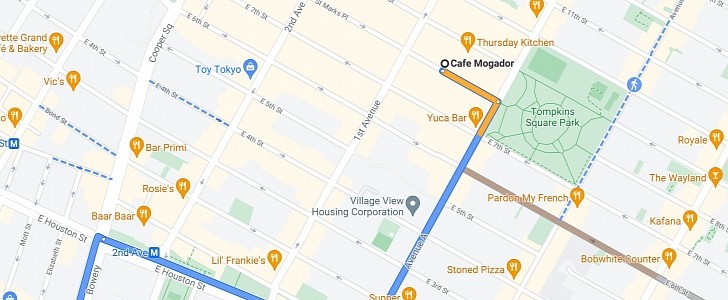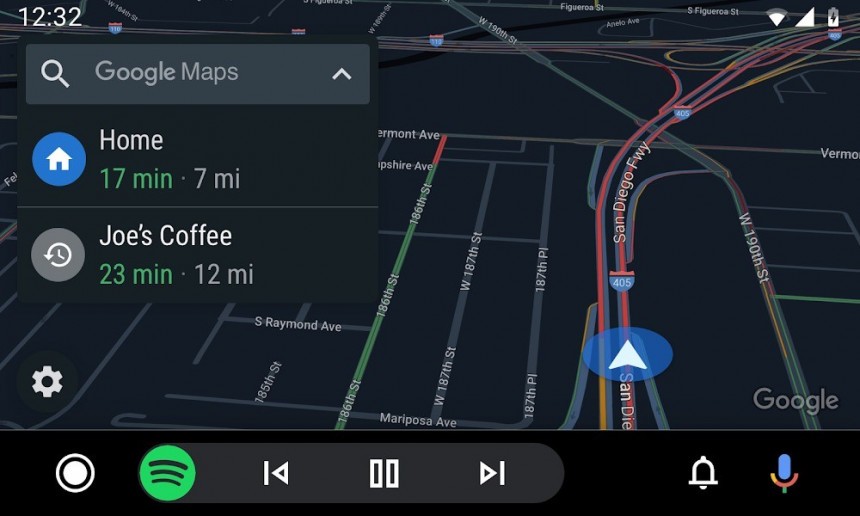Google Maps is an application whose routing model is continuously evolving, and earlier this year, the Mountain View-based search giant has come up with several new-generation updates that perfectly make sense given the changing trends in the automotive market as a whole.
For example, Google Maps will no longer suggest the fastest route to a specific destination but look for the one with the lowest carbon footprint. In other words, Google wants to help drivers reduce fuel consumption, and configuring Google Maps to provide more efficient routes is one way to do this.
Earlier this month, however, Google has come up with another great innovation for its navigation app.
This time, it’s a feature that allows Google Maps to determine when drivers are braking hard, which typically means an increased likelihood of crashes, and then provide others with alternative routes that are supposed to be safer.
If one car on the road decelerates sharply, the driver in the vehicle behind needs to act fast and hit the brakes hard, eventually forcing the next one to do the same thing. The likelihood of an accident is therefore increased substantially, especially if this happens at high speeds.
The search company explains that equipping Google Maps with features to determine the routes where drivers are more likely to slam on the brakes should substantially improve the safety on public roads. Over 100 million hard-braking events could be eliminated every year if this Google Maps is properly implemented and drivers end up going on safer routes.
First and foremost, it’s the data generated by the sensors that are bundled with your mobile devices. For example, sensors like accelerometers and gyroscopes can help determine when a sudden deceleration occurs, thus providing valuable data for this feature.
But on the other hand, Google itself admits that relying solely on sensors is a risky thing to do, simply because there are many events that could trigger a sudden deceleration, or an event that looks like a hard-braking moment. One such example is someone simply dropping their phone in the cup holder, as such a simple move could make Google Maps believe you slammed on the brakes and therefore provide a false alarm that could eventually make the new feature rather inaccurate.
But Google is then processing the information using a smart system based on the routes that Google Maps is using either on the phone or on the display in the car if you use the likes of Android Auto. If a hard-braking event is signaled by the phone’s sensors, Google’s new AI-based system can look at what exactly happened on Google Maps and determine if there’s a sudden slowdown in your move along the route.
Furthermore, the AI system can further evolve with more advanced capabilities, collecting data from nearby devices also using the same route to better understand what triggered the hard braking.
And Google is ready to use this approach too, as the company says its AI-trained system would analyze regions where several hard-braking events are reported to determine what caused them.
“For example, if there’s a sudden increase in hard-braking events along a route during a certain time of day when people are likely to be driving toward the glare of the sun, our system could detect those events and offer alternate routes,” Google explains.
The new features will be available on both Android and iPhone, and needless to say, the safer routes will be offered in the car as well when setting up the navigation.
Earlier this month, however, Google has come up with another great innovation for its navigation app.
This time, it’s a feature that allows Google Maps to determine when drivers are braking hard, which typically means an increased likelihood of crashes, and then provide others with alternative routes that are supposed to be safer.
Why Google believes this is a must-have feature
First and foremost, why is this such a big update for both Google Maps and its users?The search company explains that equipping Google Maps with features to determine the routes where drivers are more likely to slam on the brakes should substantially improve the safety on public roads. Over 100 million hard-braking events could be eliminated every year if this Google Maps is properly implemented and drivers end up going on safer routes.
How Google Maps determines the routes with hard braking
Before Google Maps can provide drivers with safer routes, the application first needs to determine where are the roads drivers are more likely to slam on the brakes. To do this, the company turns to data collected from drivers running Google Maps, and Google is particularly interested in two different sets of information.First and foremost, it’s the data generated by the sensors that are bundled with your mobile devices. For example, sensors like accelerometers and gyroscopes can help determine when a sudden deceleration occurs, thus providing valuable data for this feature.
But on the other hand, Google itself admits that relying solely on sensors is a risky thing to do, simply because there are many events that could trigger a sudden deceleration, or an event that looks like a hard-braking moment. One such example is someone simply dropping their phone in the cup holder, as such a simple move could make Google Maps believe you slammed on the brakes and therefore provide a false alarm that could eventually make the new feature rather inaccurate.
Furthermore, the AI system can further evolve with more advanced capabilities, collecting data from nearby devices also using the same route to better understand what triggered the hard braking.
And Google is ready to use this approach too, as the company says its AI-trained system would analyze regions where several hard-braking events are reported to determine what caused them.
“For example, if there’s a sudden increase in hard-braking events along a route during a certain time of day when people are likely to be driving toward the glare of the sun, our system could detect those events and offer alternate routes,” Google explains.
The new features will be available on both Android and iPhone, and needless to say, the safer routes will be offered in the car as well when setting up the navigation.






